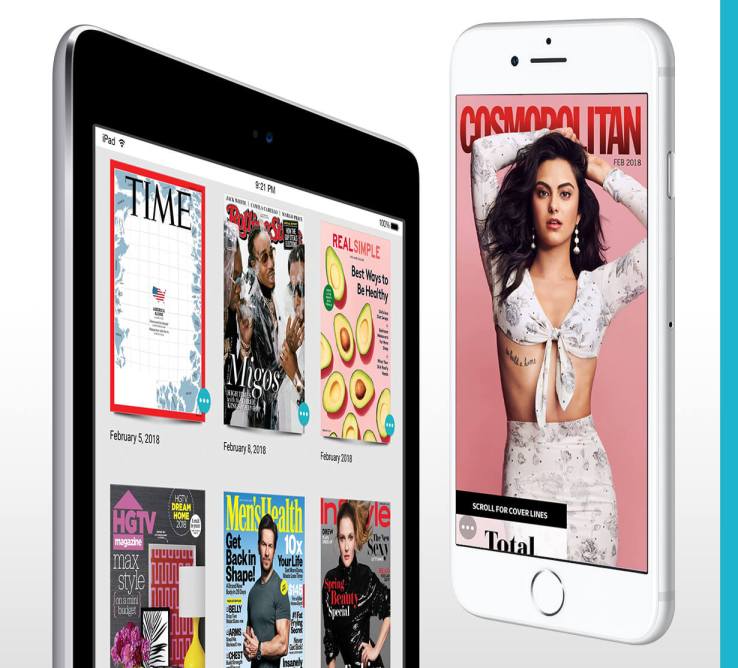Apple acquires digital newsstand Texture as it doubles down on content ‘from trusted sources’

As the debate continues over fake news and the role that aggregators like Facebook have played in spreading it, Apple is making an acquisition that could help it lay out a position as a purveyor of trusted information. The iPhone maker is buying Texture, a magazine virtual newsstand that’s known as the “Netflix of magazine publishing” that gives readers access to around 200 magazines for a monthly fee of $9.99.
“We’re excited Texture will join Apple, along with an impressive catalog of magazines from many of the world’s leading publishers,” said Eddy Cue, Apple’s senior vice president of Internet Software & Services, in a statement. “We are committed to quality journalism from trusted sources and allowing magazines to keep producing beautifully designed and engaging stories for users.”
From what we understand, Texture — formerly known as Next Issue — will continue to operate as is with no changes — meaning that it will continue to offer apps for iOS, Android, Amazon Kindle Fire and Windows 8 and 10. Apple is acquiring the full company, including employees, and the deal is expected to close very soon.
“I’m thrilled that Next Issue Media, and its award-winning Texture app, are being acquired by Apple,” said John Loughlin, CEO of Next Issue Media / Texture, in a statement. “The Texture team and its current owners, Condé Nast, Hearst, Meredith, Rogers Media and KKR, could not be more pleased or excited with this development. We could not imagine a better home or future for the service.”
Apple has made a number of acquisitions that are adjacent to the area of publishing and media that Texture focusses on — they include Spotify/Pandora competitor Beats for Apple Music, and BookLamp, which we described as the ‘Pandora for books’ when we broke news of that acquisition. Texture, it seems, is the first that it has made directly in the area of magazine publishing.
Financial terms of this deal are not being revealed, and Texture has never disclosed its valuation.
Before it rebranded in 2015, Texture (then known as Next Issue Media) was a joint venture between Condé Nast, Hearst, Meredith, News Corp., Rogers Communications, and Time Inc. The company, it appears, has raised at least $90 million — $40 million from the publishers, and an additional $50 million from KKR and other investors that include BuzzFeed, Vox Media and Imgur.
Texture, and before it Next Issue, has been around since 2010. It was launched at a time when a number of other digital newsstands were hitting the market.
Tapping into the new popularity of apps and the belief that these would become the primary way that consumers would read newspapers and magazines, publishers also believed that this could be a key way for them to better monetise their content, after missing the boat both on paywalls for online content and reaping large benefits from online ads, areas where large aggregators like Google largely reaped the rewards.
It’s not clear how many users Texture had. An article from 2014 estimated the number at 150,000, while this story from 2016 noted it was in the “several hundreds of thousands” with 50 percent growth expected in the coming years. The company had also struck deals with a number of third parties like Sprint to bundle the service with subscriptions as a sweetener for consumers to opt for their service over that of other mobile carriers.
Nor is it clear what Apple intends to do with Texture longer term.
One area where we could see the product end up is Apple News, where Apple already provides access to a variety of third-party content. More generally, the company has been focusing on a larger premium content play across other mediums, putting a lot of investment into music, video and podcasts. Texture fills out the scope of that vision with reading material.
Apple, of course, once had a “Newsstand” of its own — specifically its own native app that went by that name. The service never really took off, and Apple eventually killed that product and folded it into Apple News.
One reason that this is different is that it will essentially bring lots of magazines into a single format rather than offering a marketplace of essentially different magazine and newspaper apps, which seems to have been one of the pain points of the original Newsstand from the perspective of users and publisher developers.
(I have to say, it was never really clear who mandated that format at the time: it could easily have been Apple and the technical limits of the time when Newsstand first emerged in 2011, although there were other apps that also worked around that. It could easily have been publishers who thought building from the ground up, similar to their own vertically-integrated printing organisations, was the way ahead.)
But in another sense, this acquisition is also simply table stakes for companies like Apple. Amazon launched its own subscription services last year, and Google of course also offers a newsstand of sorts via Google Play, so this is also about keeping up and making sure that it, too, continues to provide what all device owners increasingly want and expect.
Apple’s Cue also took to the stage at SXSW in Austin today, whee he talked a bit about Texture’s place in Apple’s news efforts and the company’s wider media and content strategy.